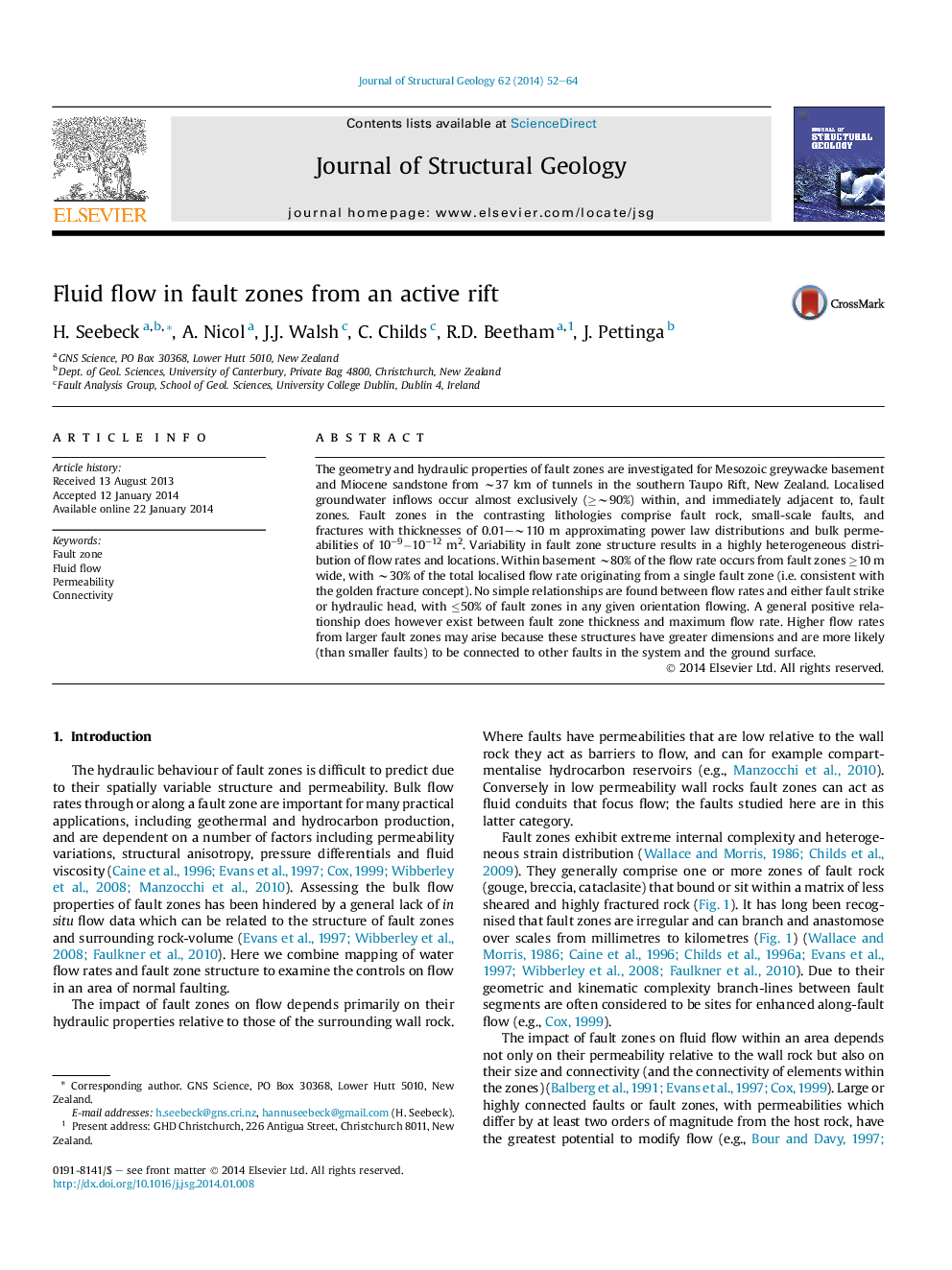| Article ID | Journal | Published Year | Pages | File Type |
|---|---|---|---|---|
| 4733128 | Journal of Structural Geology | 2014 | 13 Pages |
•Flow rates from faults in tunnels shallower than 500 m are independent of fault orientation.•Fault zone thicknesses approximate power law distributions.•≥∼90% of localised groundwater inflow occurs within, and adjacent to, fault zones.•The primary control on flow rates into the tunnels is fault zone geometry and connectivity.•∼30% of the total localised flow rate originates from a single fault zone.
The geometry and hydraulic properties of fault zones are investigated for Mesozoic greywacke basement and Miocene sandstone from ∼37 km of tunnels in the southern Taupo Rift, New Zealand. Localised groundwater inflows occur almost exclusively (≥∼90%) within, and immediately adjacent to, fault zones. Fault zones in the contrasting lithologies comprise fault rock, small-scale faults, and fractures with thicknesses of 0.01–∼110 m approximating power law distributions and bulk permeabilities of 10−9−10−12 m2. Variability in fault zone structure results in a highly heterogeneous distribution of flow rates and locations. Within basement ∼80% of the flow rate occurs from fault zones ≥10 m wide, with ∼30% of the total localised flow rate originating from a single fault zone (i.e. consistent with the golden fracture concept). No simple relationships are found between flow rates and either fault strike or hydraulic head, with ≤50% of fault zones in any given orientation flowing. A general positive relationship does however exist between fault zone thickness and maximum flow rate. Higher flow rates from larger fault zones may arise because these structures have greater dimensions and are more likely (than smaller faults) to be connected to other faults in the system and the ground surface.
